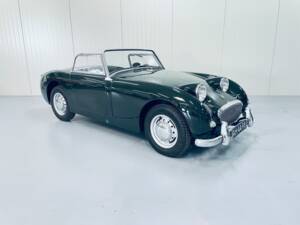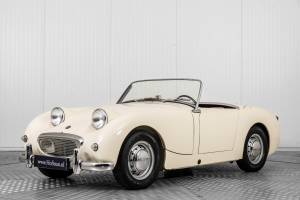- Car
- Austin-Healey
- Austin-Healey Sprite (9 offers)
Austin-Healey Sprite classic cars for sale
The Austin-Healey Sprite represents one of Britain’s most spirited takes on affordable sports motoring, packing agile road manners and mechanical simplicity into a lightweight two-seater package that’s become a favourite among classic enthusiasts worldwide.
Search results

1960 | Austin-Healey Sprite Mk I
Restored Frogeye
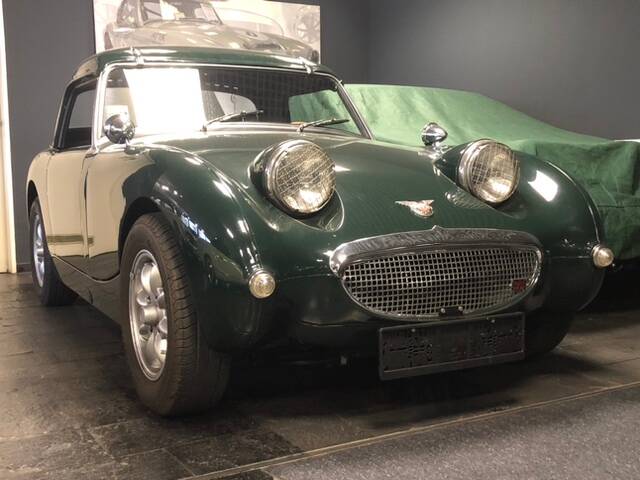
1959 | Austin-Healey Sprite Mk I
SUPERCHARGED
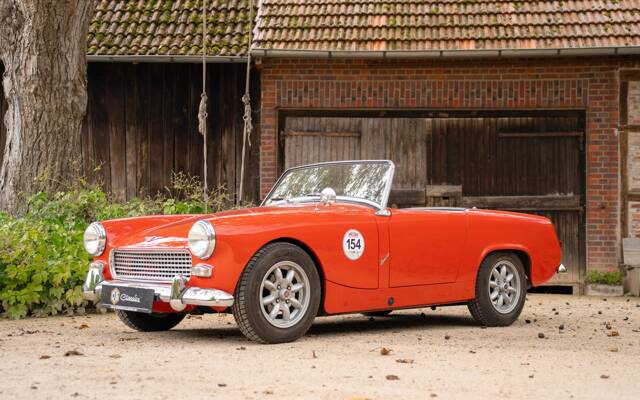
1963 | Austin-Healey Sprite Mk II (HAN7)
Restaurierter Zustand!
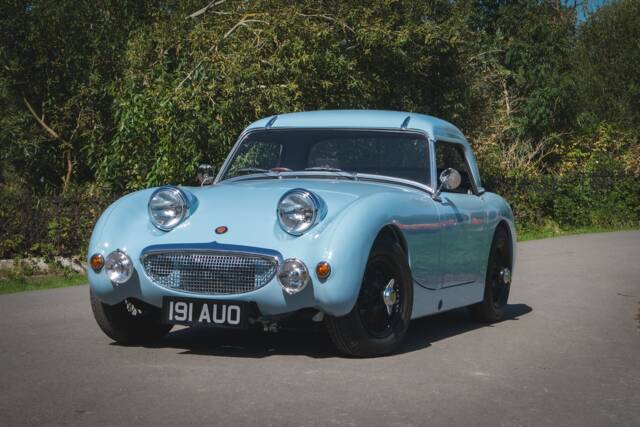
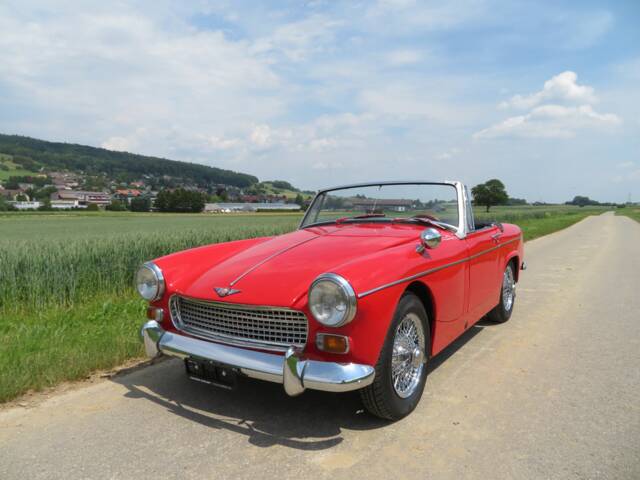
1966 | Austin-Healey Sprite Mk III
Äusserst gepflegt - MFK 8.2020 Veteran!
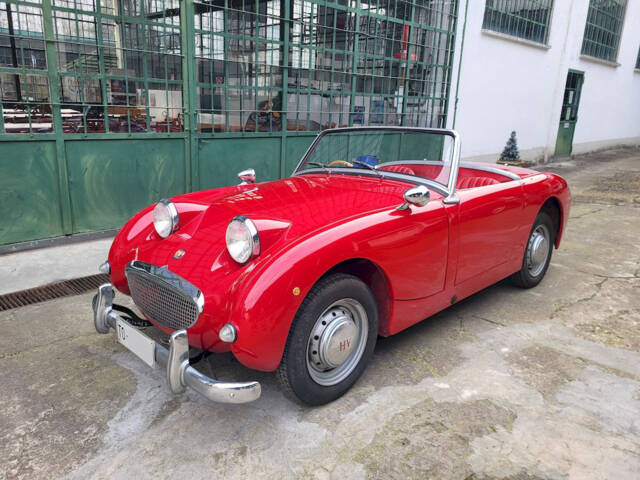
1960 | Austin-Healey Sprite Mk I
Austin-Healey Sprite MKI Frogeye – 1960
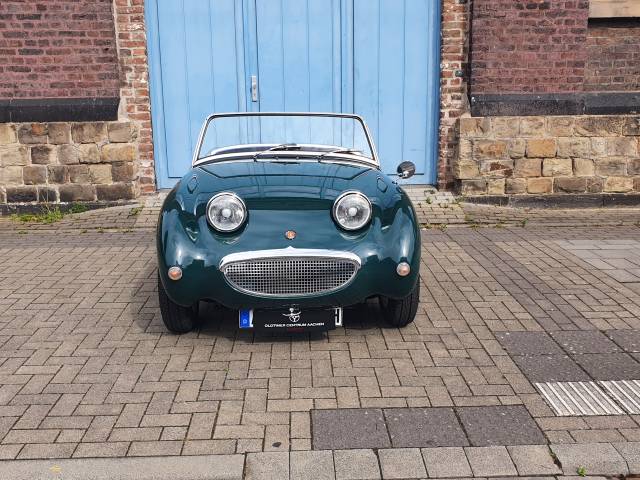
1960 | Austin-Healey Sprite Mk I
Performance enhanced
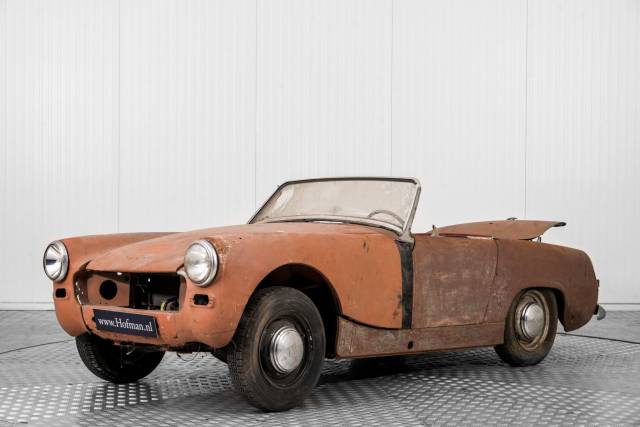
1962 | Austin-Healey Sprite Mk II (HAN7)
Austin Healey Sprite

1958 | Austin-Healey Sprite Mk I
Austin Healey Sprite Frogeye kikkeroog
Austin-Healey Sprite listing references from Classic Trader
Below you will find listings related to your search that are no longer available on Classic Trader. Use this information to gain insight into availability, value trends, and current pricing for a "Austin-Healey Sprite" to make a more informed purchasing decision.
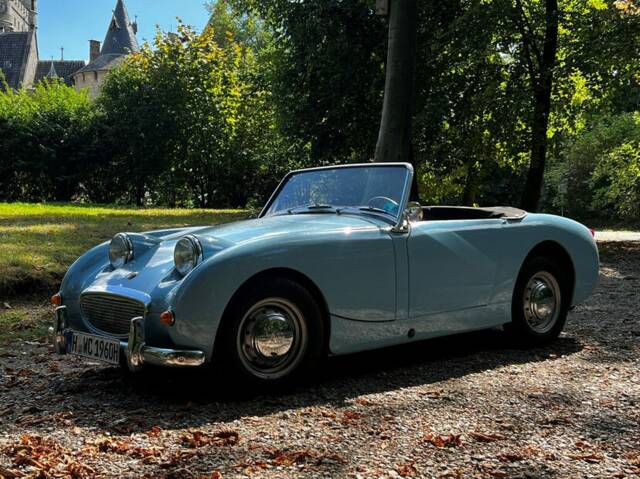
1960 | Austin-Healey Sprite Mk I
Austin Healey MK1 Frogeye | 1960 | Route 66 Auctions - For sale by auction. Estimate 10500 EUR

1971 | Austin-Healey Sprite Mk IV
1971 Austin Sprite
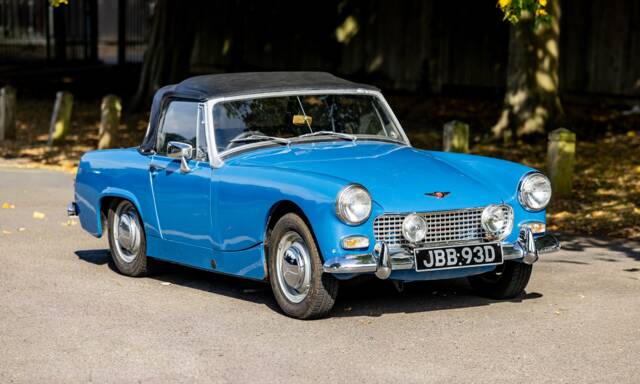
1966 | Austin-Healey Sprite Mk III
1966 Austin Healey Sprite Mk. III
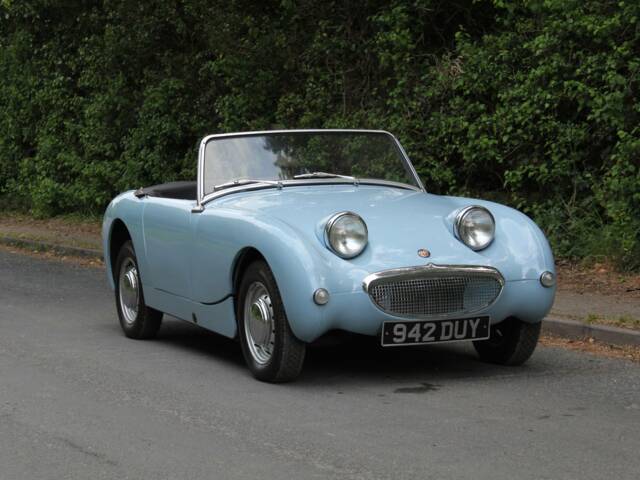
1960 | Austin-Healey Sprite Mk I
1960 Austin Healey Frogeye Sprite
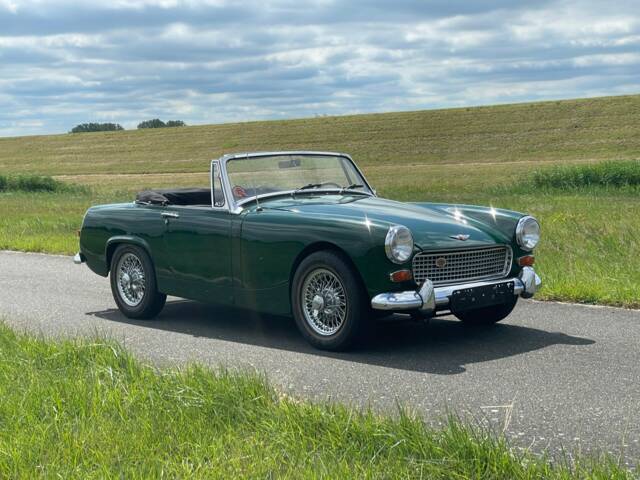
1968 | Austin-Healey Sprite Mk IV
Austin-Healey Sprite | 1968 - For sale by auction. Estimate 19950 EUR
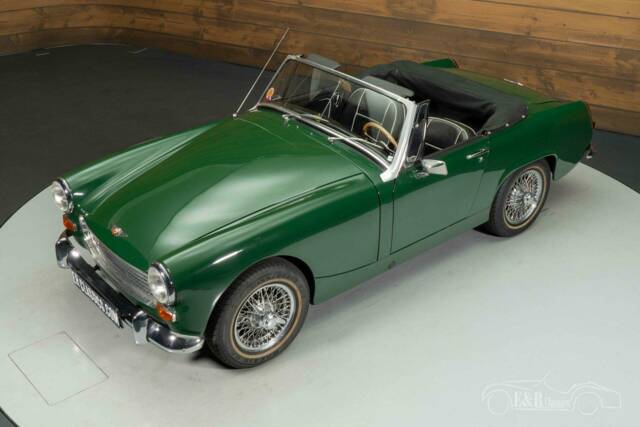
1968 | Austin-Healey Sprite Mk IV
Austin-Healey Sprite Cabriolet | 1965
History of the Austin-Healey Sprite
Launched in 1958 as a joint effort between the British Motor Corporation and the Donald Healey Motor Company, the Austin-Healey Sprite was built to deliver accessible sports car fun for less money. Developed by Donald Healey and produced in the MG works at Abingdon, the Sprite aimed to democratise spirited driving, drawing parts from other BMC vehicles to keep prices low—debuting for just £669. A press launch in Monte Carlo set an optimistic tone: the Sprite allowed motoring joy without excess, quickly gaining a devoted following. The simple design (with a one-piece hinged bonnet and minimal trim), low weight (starting at roughly 640 kg), and rear-wheel drive architecture underpinned its reputation for engaging, direct handling in the British sports car tradition.
Model History: From Frogeye to Mark IV
The first Sprite generation, the MkI (1958–1961), is most recognisable for its 'Frogeye' (or 'Bugeye' in the US) headlamp pods, a solution born from cost-saving that became a defining feature. This MkI used a 948cc A-Series four-cylinder engine with around 43 bhp and minimal luxuries, omitting even outside door handles. The MkII (1961–1964) redesigned the body for a more conventional front, repositioning the headlights, and gradually increased power — reaching 46.6 PS, with later versions boasting up to 56 PS. The MkIII (1964–1966) introduced a 1.1-litre engine (59 PS), curved windscreen, wind-up side windows, and more robustness, while the MkIV (1966–1971) grew further to a 1,275cc engine with 65 PS. Production ended in 1971 when the association with Healey concluded, and a final batch sold simply as 'Austin Sprite.' Throughout its run, many components were shared with the MG Midget, and the two are often jointly referred to as 'Spridgets.'
Highlights and Market Data
Distinctive for its simple, no-frills approach, the Sprite grabs attention with its featherweight construction, 'go-kart' handling, and unique bodywork design (especially the Frogeye front). The cost-conscious approach led to a single-piece front end that provided rare engine access, while minimal interior equipment let the core driving experience shine. Competition history includes class wins at the Alpine Rally and a notable 12th overall at Le Mans 1965.
Technical Data
Special Editions and Notable Models
Distinctive editions include the rare Speedwell Sprite, identifiable by its aluminium bodywork and aerodynamic modifications for competition, and the Alexander-tuned Sprites, which offered factory-authorised performance parts and enhanced road presence. Official factory racers entered high-profile events like Sebring and Le Mans, marking their place in endurance and club-level motorsport history.
Maintenance and Weak Spots
Sprites’ simplicity translates into straightforward ownership: BMC A-Series engines are robust and parts availability is excellent, helped by the car's popularity. Many key vulnerable points are widely documented—including rust-prone body panels, especially sills, floorpans, and rear spring mounts. Early models’ minimal equipment means less to fail, but pay attention to mechanical condition (especially engine compression, gearbox synchros, and brake function). Many Sprites are modified or restored; original specification, sound structure, and provenance (such as Heritage Certificates) retain the best values.
Engine, Performance and Driving Characteristics
With a low centre of gravity, the Sprite offers agile handling, direct steering, and an 'instinctive', raw driving feel praised by drivers and testers alike. Even the entry-level 948cc engine keeps the car lively due to the low weight, and later models with 1,098 or 1,275 cc engines brought genuinely brisk performance in period terms. Uprated versions using Weber carburettors or competition camshafts see further gains, especially in historic motorsport. Four-speed manual transmissions suit the character, while some later cars have period-correct five-speed conversions for drivability. Braking systems were originally all-drum, but many cars now feature front disc upgrades for improved stopping. Popular models to consider include the MkI 'Frogeye' for its purity, MkIII for balanced useability, and the MkIV for power. - MkI (Frogeye): iconic looks, purest Sprite experience
- MkIII: 1,098 cc, improved ergonomics, wind-up windows
- MkIV: 1,275 cc powerhouse of the range
Design, Interior and Options
The Sprite’s styling is unmistakable—most notably the protruding, integrated headlights of the MkI. Body colours often include British Racing Green, Old English White, Iris Blue, Tartan Red, and, less commonly, special editions like 'Highway Yellow.' Early Sprites forgo door handles and exterior locks, amplifying the pared-back sporting aesthetic. Interior trim tended towards black or colour-accented vinyl or leather, minimalist dashboards with Smiths dials, and options like tonneau covers, detachable side screens, and rare factory hardtops. Wheels started as simple 13-inch steel units, but many Sprites wear wire wheels, Minilite-style alloys, or period racing rims. Heritage Certificates and matching numbers are highly regarded by collectors.
Other Features and Facts
The Sprite’s historical motorsport success, parts interchangeability, and suitability for home mechanics make it a mainstay in both touring and competition. Owners often document their cars thoroughly, including restoration records and expert appraisals. Many Sprites in Europe have histories that include importation from the UK or US.
Summary
Few sports cars deliver the sense of connection, value, and outright joy found in an Austin-Healey Sprite. With excellent parts supply, straightforward maintenance, and a significant place in classic car culture—not least due to its motorsport heritage and energetic driving experience—the Sprite remains a truly distinctive British roadster for enthusiasts seeking maximum involvement and mechanical charm.
